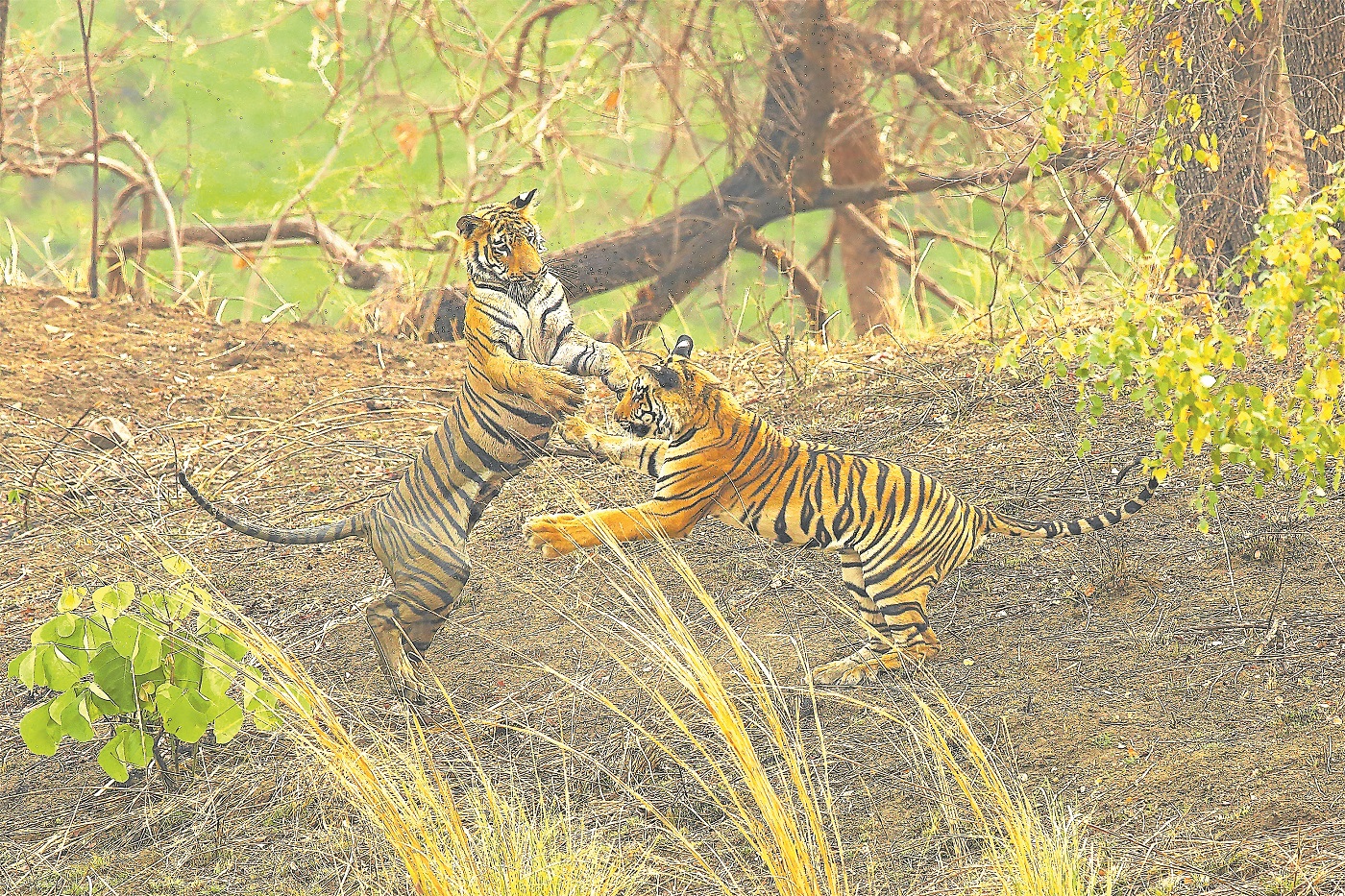Despite the pandemic easily magnifying humanity’s self-inflicted woes, National Geographic continues to throw its support for wildlife conservation and protection of the environment—because poachers and greedy capitalists remain undeterred by lockdowns brought about by the lingering global health crisis.
This Monday, the National Geographic Society, by way of the partnership forged between Big Cat Initiative and Nat Geo Wild, is commemorating the 10th annual Big Cat Week, which kicks off with the launch of Dereck and Beverly Joubert’s “Jade Eyed Leopard” on Jan. 25 (at 8:30 p.m. on Nat Geo Wild), followed by Aishwarya Sridhar’s “Tiger Queen of Taru” on Jan. 27 (at 8:30 p.m.).
After sitting through “Tiger Queen of Taru,” a deeply compelling documentary that plays out like a “teleserye” for tigers and shot over a six-year period, we spoke to Aishwarya, a National Geographic Explorer-at-Large and conservationist, about her experience following a Bengal tigress named Maya as she establishes her territory in a tiger reserve in Tadoba, Central India to secure her bloodline.
The effort to protect Maya and other endangered beasts from poachers makes a lot of sense, especially after learning that there are only less than 3,000 Bengal tigers left in the Indian wild.
Narrated by Stephen Beckett, the film shows feisty Maya losing her mom Lila to poachers, and later her two cubs to wild dogs. After giving birth to two more cubs, Maya banishes her male mate Matkasa following his embarrassing mano-a-mano with a sloth bear. But can Maya protect her cubs and territory alone?
Aishwarya, who turned 24 on the day of this interview, told us that following Maya’s coming-of-age story for six years was itself a journey of ups and downs. “I didn’t start with the aim of making a film,” she admitted to us. “I was interested in wildlife photography. But on my first visit to the Tadoba wildlife sanctuary in Maharashtra, I remember noticing Maya as a cub, with her three siblings playing in the water.
“Something about her made me feel like Maya was different because she was very bold, compared to her other siblings. She was barely 11 months old, but I saw her charge a wild gaur (Indian bison) that was almost twice her size!
“Seeing her behavior in that situation, I knew that she was on her way to taking over her mom’s throne. When her mother suddenly passed away, Maya kind of stepped up. Her siblings moved away, while she claimed her mother’s entire area—and expanded it! Today, she rules the largest territory for a tiger in Tadoba, which includes five major water bodies.”
Our Q&A with Aishwarya:
Six years is a pretty long time to pursue a subject matter. What were frustrating moments for you for this project?
It was frustrating not to see Maya in some occasions. Thankfully, in quite a lot of times, I’ve been able to see her because I feel I have a special bond with her. No matter where I go, she would always “find” me (laughs).
Also, not getting a particular shot I visualized in my mind was frustrating. Then again, I also had to balance my A levels (subject-based exams in high school that can lead to university) and filming.
You were just in your teens when you began pursuing this project. Many people at that age have yet to develop focus. But patience and passion are obviously necessary traits for the work that you do. Did you have these qualities growing up?
Passion, yes—I did inherit that from my father, who is himself a wildlife enthusiast. So, I spent a lot of time outdoors growing up. Patience wasn’t there, initially. I used to get pretty frustrated when I wouldn’t see something I expected to see. But this changed with time, and I began to enjoy every moment I spent in the wild.
You said it wasn’t your original intention to turn this into a film. When did that change?
At first, I took videos and photos every time I’d visit Tadoba. But I think it was 2016 when Maya, who had three cubs by then, displayed behavior unlike that of other big cats. She was separated from her family after an intruding male entered the picture and chased off all her cubs. So, she brought back her former mate to drive the intruder away!
Seeing those dynamics at play, I saw Maya as a tigress who was thought like a human. I mean, MBA lessons could be learned from her, especially the way she strategized the whole thing. That’s when I felt I could turn her story into a documentary.
What can humans learn from tigers?
People see tigers as mere carnivores. But I want them to know that tigers can also think and have the ability to express emotions. If you’ve seen the film, you’ll also notice that tigers are very emotive. Maya, for example, is bold. She has empathy and capacity to love. She knew when to keep her partner and when to let him go for the sake of her kids.
Is there any justification for breeding tigers in captivity?
There are mixed opinions about this. Like, some people feel that certain breeds need captive breeding so that their population can grow. But I personally feel that wild animals should be allowed to roam free, and only in their habitat—that’s where they belong.
We can’t keep tigers in cages. It’s like how frustrated we all were when we were holed up indoors, inside our houses, because of COVID-19. They’re meant to be out there in the open. All we have to do is leave them alone.
“Tiger Queen of Taru” premieres on Jan. 27 at 8:30 p.m. on National Geographic Wild (channels 66/193 on SkyCable and channel 142 on Cignal).


